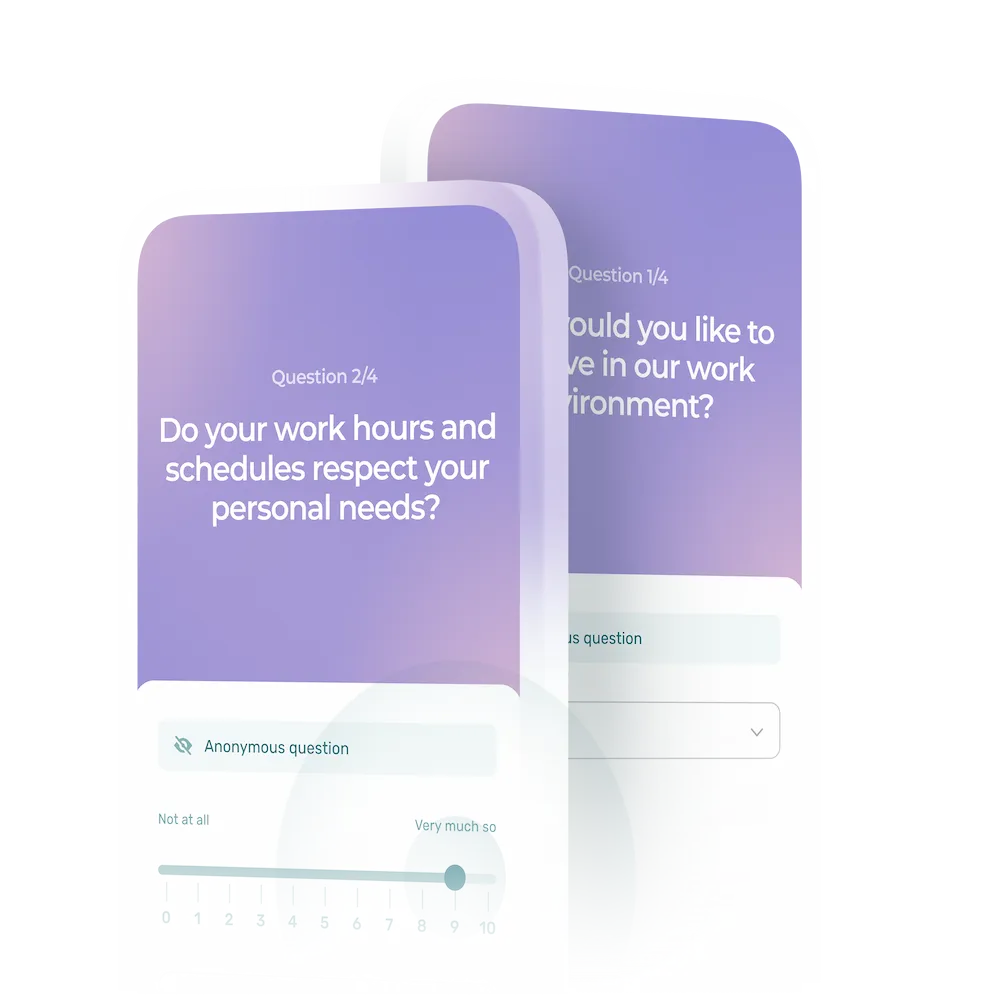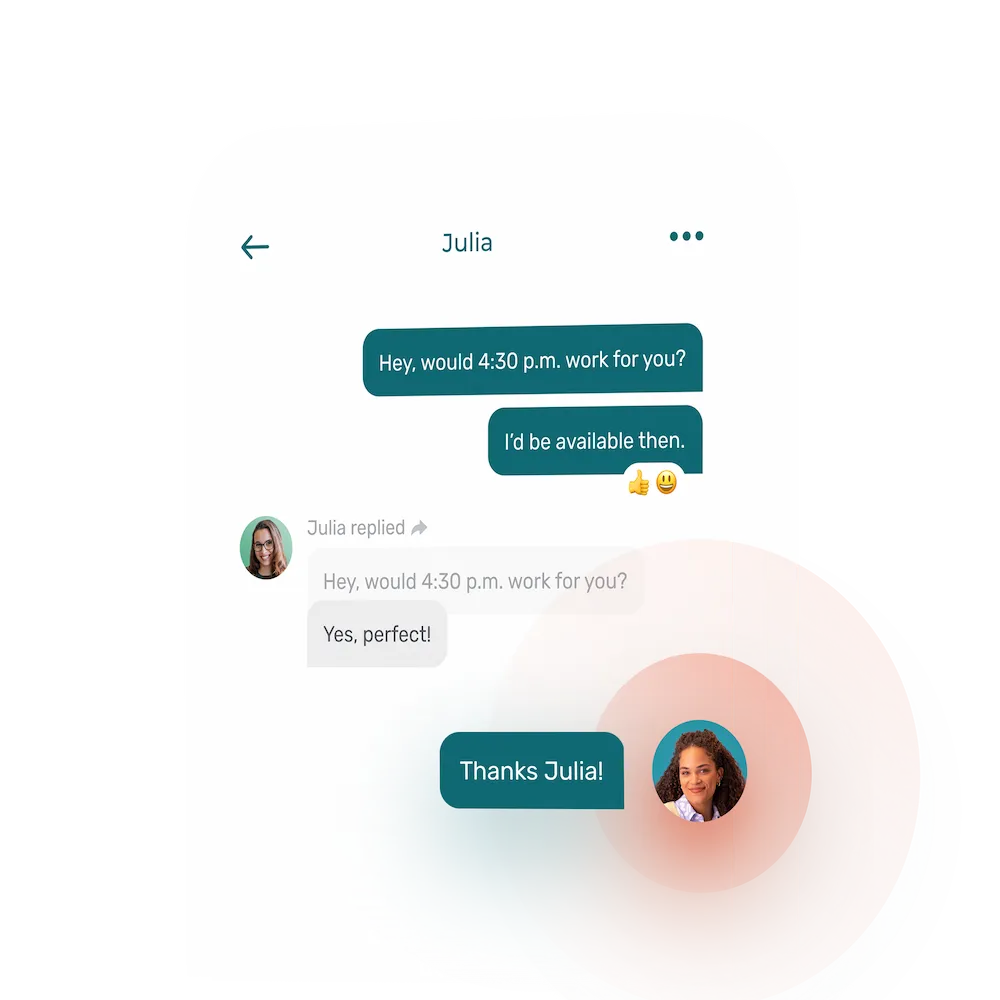Understanding and accommodating employee shift preferences can significantly improve employee motivation, productivity, job satisfaction, and overall workplace morale.
This article will help shift workers identify their best shift and how to answer interview questions about their preferred shift when applying for a new shift job.
It also helps hiring managers know what interview questions to ask, along with when and how to accommodate shift preferences. We include practical tips and key takeaways for both managers and employees to help teams work more productively and happily.
A Quick Look At the Main Shifts
- Morning shift: Typically starts early in the morning and ends in the early afternoon, covering the first part of standard business hours.
- Day shift: Generally spans the bulk of standard business hours, often starting in the morning and ending in the late afternoon.
- Night shift: Covers the evening to late-night hours, accommodating businesses that operate beyond regular business hours.
- Graveyard shift: Takes place during the late-night to early-morning hours, essential for 24/7 operations such as healthcare and security.
There are other shifts out there, but these are the most common shift types typically found in shift works.
Easily accommodate employee preferred work shifts, track work hours, labor costs and more with Agendrix employee scheduling software.
7 Considerations When Choosing Your Preferred Work Shift
During a job interview or periodically throughout your employment, your manager may ask you about your preferred work shifts. The following are some of the considerations that shift workers should keep in mind when choosing their preferred work shifts.
1. Productivity and Efficiency
Some of us shift workers are morning people. Others are more of a night owl. If asked about your preferred work shift (or your preferred start and end hour), think about the hours or time of day that you are most productive, alert and efficient.
Aligning your work hours with your natural productivity rhythms can improve your job satisfaction and work performance. This could lead to more promotions and raises. Or even access to a highly coveted role.
Think carefully about when you prefer to work, and when you prefer to socialize with friends and your family. The right shift will vary depending on a myriad of factors. Keep in mind that different shifts may also require you to fulfill different shift duties. For example, if you work in a cafe, the morning shift will typically be busier than the afternoon shift.
Tips:
- Hiring managers should try to align shift hours—night shifts—with workers who are night owls. When an employee works the right shift, they will be more productive and a greater asset to the organization.
- If a shift worker shows potential but is having a hard time with their graveyard shift, discuss the possibility of scheduling them for other shifts to see productivity and presence improve.
2. Health and Sleep
Some shifts that disrupt normal sleep patterns, like night and graveyard shifts, can have significant effects on a person’s health. Perhaps even more so if you are a morning person.
Lacking sleep won’t just leave you feeling fatigued. It can also lower your immunity and lead to long-term health issues like obesity and cardiovascular diseases. On the other hand, day time shifts may mean longer commutes, which can increase stress.
Studies show that long commutes can negatively impact health in a number of ways, including increased stress, poorer cardiovascular health and more exposure to pollution.
Tips:
- Not all shift workers can productively work nights. Others struggle to stay alert and productive for eight-hour shifts even during the daytime. If you often find yourself nodding off in the middle of the afternoon, working split shifts will give you a longer break during the work day.
- Don’t ignore your need for sleep and rest. You may be able to push through for one week or maybe two, but eventually your fatigue will catch up with you.
3. Work-Life Balance
Some shift jobs might interfere with family life, social activities, or other responsibilities. Those working different shifts in hospitals, fire departments, or nursing homes can attest to that.
Take the night shift as an example. You may need to head off to your job just as your kids and spouse are coming home from school and work. By the time you get home, your family is already fast asleep. This may not leave you many opportunities to spend time with family and friends, increasing your risk of social isolation.
On the other hand, more introverted types might prefer to work different shifts than the rest of the population so that they can go about their business or run errands when there are less people in stores.
4. Safety
Safety can be a concern, particularly for a shift worker who works nights for instance. Depending on the location of the job and the shift hours worked, commuting during the night time when there are fewer people can pose safety risks. Consider your safety and security when opting for certain shifts. Find out what measures your employer has in place to ensure employee safety during these hours.
Did you know?
Graveyard shift workers are more likely to confront dark corridors and secluded areas, putting them at greater risk.
5. Income
Some employers offer shift differentials or premium pay for shifts that are less desirable, such as night or graveyard shifts, to incentivize workers to cover these hours. Working these shifts may result in a higher pay rate and significantly increase your overall income. For some people, this could lead to a more healthy lifestyle.
Additionally, some shifts may offer more opportunities for overtime pay. For example, evening or night shifts might have more potential for overtime due to higher demand or fewer employees available to cover these odd hours.
Shift differential refers to the bump in pay employees often receive (usually 10% to 15%) to work less popular shifts.
6. Childcare
Childcare is a crucial consideration for parents when choosing a preferred work shift, particularly single parents. Traditional day shifts may align more closely with regular childcare hours, making it easier to find and arrange for childcare services that fit within your budget.
See how solo moms can find child care for the night shift.
7. Opportunities for Advancement
Day shifts might offer more visibility and interaction with management, potentially leading to greater opportunities for mentorship and advancement. They might also align better with training and development programs that typically occur during standard business hours.
On the other hand, the less popular night or graveyard shifts might have less competition for promotions or other advancement opportunities. It might also leave you with more free time to run errands during the week day.
How Shift Managers Can Accommodate Preferences
The rewards can be great for businesses that accommodate the shift preferences of employees. When team members have the flexibility to work during hours that align with their personal lives, it can improve employee motivation and productivity levels. Chances are you’ll also see a noticeable decrease in absenteeism and employee turnover rates.
Allowing employees to choose their preferred shifts can also foster a positive work culture, where employees feel valued and respected. This can lead to a more harmonious and efficient workplace environment. And that can mean a more productive, engaged, and loyal workforce.
The key is to ensure that the shift work schedule meets business needs as well.
Tips for Managers Who Want to Accommodate Schedule Preferences
Below are some tips for managers who want to accommodate employee shift preferences.
1. Survey Employees
- Use surveys or questionnaires to gather employee input on their preferred work shifts.
- Come right out and ask shift job candidates and team members: What shift do you prefer? Based on your scheduling approach, give them all the options available to them: night shift, midnight shift, day shift, morning shift, swing shift, first shift, second shift, third shift, afternoon shift, split shifts, etc.
- The goal is to find out what is each employee’s favorite shift schedule.
- Analyze the collected data to identify common preferences and potential scheduling conflicts.
Tips:
- Simplify the creation and analysis of employee surveys with employee survey software.
- Use anonymous surveys to encourage honest and open feedback.
Did you know?
According to the Harvard Business Review, employee surveys are still one of the best ways to measure engagement:
Not having a regular survey sends a clear message: you don’t care about people’s opinions. The act of filling out a survey gives them a specific channel for expressing their voice.
Manage all HR and scheduling tasks from a single, easy-to use employee management platform.
2. Use an Employee Scheduling Tool
- Implement scheduling software to make it easier to manage, visualize and schedule different shifts.
- Ensure the tool has plenty of user-friendly features for employees: ways to input their availability and state their preferences, view their schedules, swap shifts, make time off requests, different ways to clock, etc.
Tips:
- Opt for a user-friendly scheduling software that integrates seamlessly with other HR systems.
- Look for a software that is regularly updated with new features and improvements.
- Train employees on how to use the scheduling tool effectively.
- Encourage them to regularly update their availability and preferences in the tool.
Agendrix scheduling software has a mobile app that lets employees do all this while on the go.
3. Keep Communication Open
- Establish clear and open lines of communication with employees regarding scheduling.
- Instead of juggling multiple communication channels like phone calls, emails and bulletin boards, use an internal and dedicated employee communication platform to disseminate scheduling information more effectively.
Tip: Schedule regular check-ins or meetings to discuss any scheduling issues or concerns.
Did you know?
Effective communication in the workplace reduces workplace conflicts—including scheduling conflicts. It also boosts employee motivation, satisfaction, engagement, and productivity.
According to Gallup’s State of the Global Workplace 2022 Report, only 13% of the 31 million employees surveyed said that their managers practiced effective workplace communication.
4. Implement a Rotation System
- Implement a rotation system where team members take turns working different shifts, such as a 2-2-3 schedule.
- Clearly communicate the rotation schedule and ensure it’s fair and transparent.
Tip: Learn how to properly implement a rotating shift schedule. Read our Industry Guide to Boost Your Scheduling.
Did you know?
The term “rotational shiftwork” refers to a variety of work schedules in which shifts rotate or change according to a set schedule. Shift workers take turns working all shifts. Shifts can run continuously, such as 24/7, or semi-continuously, such as 2 or 3 shifts a day, with or without weekends.
A rotating shift schedule can boost productivity, distribute unpopular shifts equally, and foster stronger relationships among co-workers. That said, rotating shift work has been linked with certain health risks for employees. There are things managers can do to help shift workers manage a rotating shift.
5. Offer Flexibility and Shift Swapping
- Allow employees to swap shifts with each other, provided it doesn’t disrupt operations.
- Set clear guidelines and processes for how shift swaps should be requested and approved.
Tip: Use a scheduling tool that facilitates easy shift swapping between employees.
Did you know?
Research by Oxford University’s Saïd Business School found that happy workers are 13% more productive.
If you think that shift swapping will overly complicate employee scheduling, think again. With the right tools, shift swaps can be incredibly easy. Allowing employees to trade shifts gives them more control over their work schedules while letting your business fill empty shift slots.
See more: How to Effortlessly Schedule Employee Swap Shifts
6. Consider Seniority
- Give preference to senior employees when assigning different shifts.
- Ensure the seniority-based system is transparent and consistently applied.
Tip: Clearly communicate how seniority is defined and used in the scheduling process to avoid misunderstandings and resentment.
Did you know?
Seniority systems in organizations are legal and can be governed by collective agreements with trade unions or internal organizational rules. These systems are designed to minimize competition for perks and prevent unethical behaviors like favoritism or nepotism in promotions.
Seniority can offer various benefits to employees, including increased job security, first option for overtime shifts, more paid time off, predictability in receiving benefits, preferred job choices, opportunities for promotions, higher salaries, flexibility in setting shifts and work hours, access to training opportunities, and additional perks like preferred office locations or discounts.
Industries that commonly use seniority structures include construction, healthcare, hotels, some restaurants, events and catering, tourism and retail, often in union-represented jobs.
7. Use a Variety of Scheduling Models
Some businesses have the flexibility to juggle multiple shift scheduling models to accommodate employee preferences while still meeting staffing needs. For example, some team members may work on a fixed day schedule, others work a rotating shift schedule and still others work split shifts.
- Regularly review your multiple schedule approach and adjust it to ensure it’s meeting the needs of both the business and the employees.
- Gather employee feedback on scheduling to identify areas for improvement.
- Using scheduling software will be particularly helpful for juggling a variety of shift scheduling models.
Key Takeaways for Managers
- Aim for a balanced approach that meets both business objectives and employee needs to foster a positive and productive work environment.
- Understand the variety of work schedules available and the unique pros and cons of each to make informed decisions that best suit your business needs.
- Leverage employee scheduling software like Agendrix to streamline the scheduling process, reduce errors, and improve communication.
- Actively seek and accommodate employee shift preferences to boost job satisfaction and overall workplace morale.
- Utilize tools such as surveys and open communication channels to gather employee feedback on scheduling preferences.
- Continuously improve your scheduling process as your business and team evolves.
Key Takeaways for Employees
- Familiarize yourself with the different shifts available to you and understand how each can impact your work-life balance, health, and productivity.
- Take advantage of any work flexibility options available, such as flextime or compressed work weeks, to better align your work schedule with personal needs.
- Communicate your shift preferences and any scheduling concerns to your manager or HR department.
- Be proactive in seeking opportunities that align with your preferred schedule, such as training sessions or overtime shifts.
- Understand that while your preferences are important, there may be times when business needs require flexibility and compromise from all team members.











